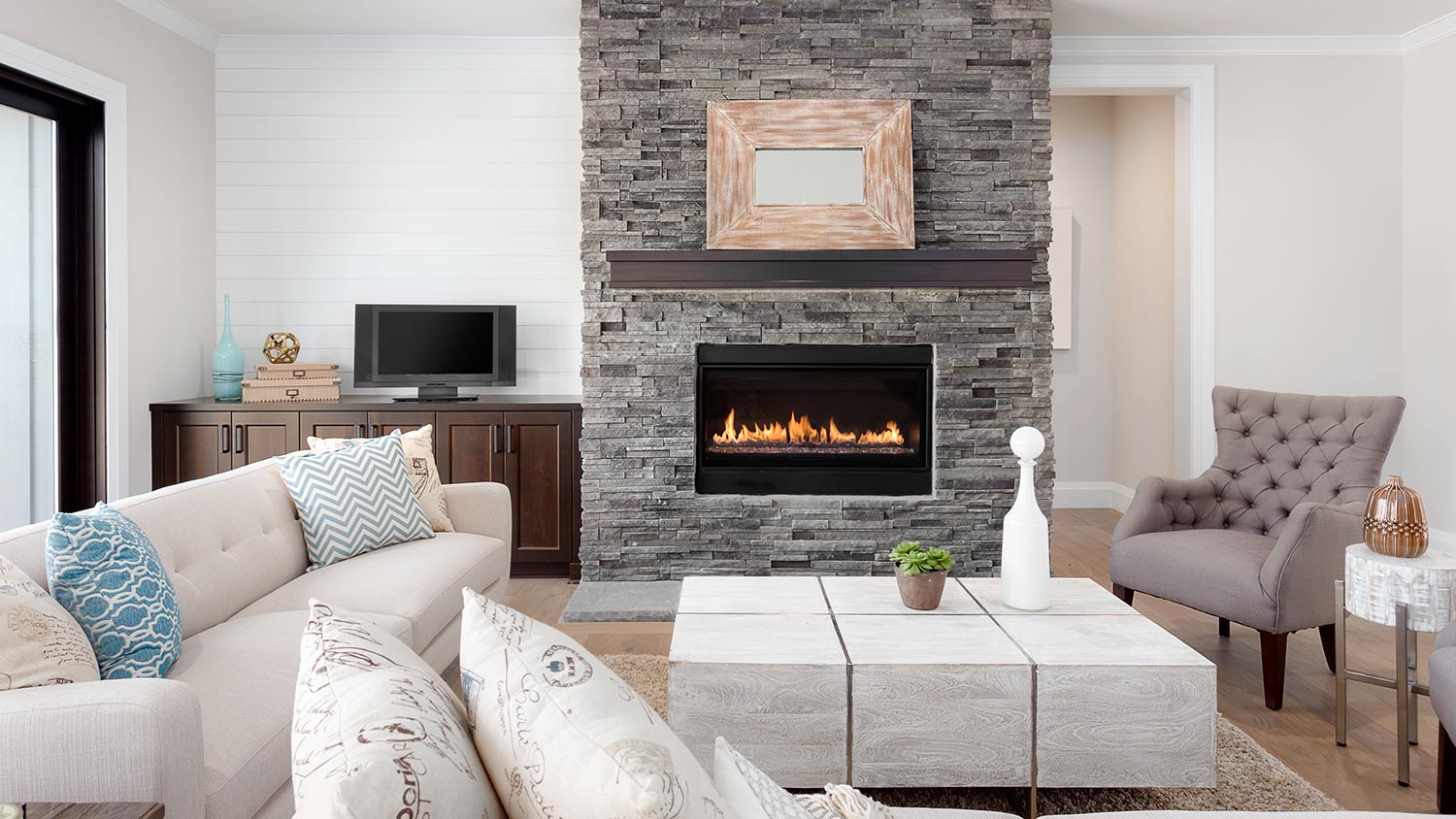What Causes Chimney Fires? Most Common Causes and Prevention Tips
Flames belong in your fireplace—not your chimney


Creosote, a flammable substance created by burning wood, is the top cause of chimney fires.
When enough creosote accumulates in your chimney, it can ignite and set your chimney on fire.
While you can clean light or moderate creosote buildup yourself, it’s safer to hire a pro.
A chimney can also catch fire if there’s something blocking the flue.
Leaves, twigs, branches, bird nests, and animals can all block a chimney flue.
Even though chimneys are designed to withstand heat and flames, they can actually catch fire themselves—and put you in a life-threatening situation. So, what causes chimney fires? Often, it’s a buildup of creosote, but they can start for other reasons, too. Here’s how to prevent those problems so that your chimney doesn’t go up in flames.
1. Creosote Buildup
Creosote, a tar-like byproduct of wood combustion, is the leading cause of chimney fires. While you burn wood in your fireplace, creosote sticks to the walls of your chimney. If you don’t clean your chimney often enough, the creosote can ignite when the temperature inside your chimney rises.
How to Fix It
You can’t prevent a wood-burning fireplace from producing creosote, but you can—and absolutely should—hire a pro to regularly clean the buildup from your chimney.
It’s safest to hire a professional for any type of chimney work, but if you want to remove creosote from your chimney on your own, you have two options:
For light creosote buildup, you can use a chimney brush to scrub the residue from the inside of your chimney.
For moderate creosote buildup, you can apply a chemical creosote remover first, then brush the chimney.
2. Blocked Chimney Flue

Your chimney flue is the pipe that runs up your chimney and channels smoke and gas out of your home safely. If the flue gets blocked—often with creosote, leaves, branches, or animals—it can lead to a fire inside your chimney.
How to Fix It
Again, we recommend hiring a pro for this sort of job—especially if the flue blockage is near the top of your chimney. If that’s the case, you’d have to climb onto your roof to clear it.
If you’re comfortable with that, you can follow these steps to clear a blocked flue:
Put on a protective face mask and safety glasses.
Empty your fireplace.
Cover your floors and nearby furniture with drop cloths.
If the blockage is near the base of your chimney, open the chimney damper and dislodge the debris with a chimney brush. When you finish, close the damper and clean up the mess with a shop vac.
If you’re clearing a clog at the top of your chimney, close the fireplace entrance with a plastic sheet and duct tape. Then, follow the rest of the steps.
Use a ladder to access your roof, being sure to follow ladder safety guidelines.
Remove the chimney cap.
Use a wire chimney brush to push the blockage down your chimney.
Replace the chimney cap.
Use a shop vac to clean up the debris.
When to Call a Pro
As we’ve mentioned, it’s safest to have a professional address these kinds of chimney problems. There are a number of reasons for this, including the health risks of working with creosote and the potential dangers of climbing onto your roof. Plus, if you don’t know what you’re doing, you could accidentally damage your chimney while trying to fix it. For those reasons, we recommend hiring a chimney repair pro near you in situations like these.
Leave all chimney work to a pro. Chimney jobs involve working on a roof, potential exposure to creosote, and ensuring a safe repair or installation of chimney parts. Each of these can be seriously harmful or even deadly for anyone without expertise.
How to Prevent Chimney Fires

By following some basic fireplace maintenance tips, you can reduce the risk of a chimney fire at your home. These include:
Minimize creosote buildup: There are several ways to keep creosote buildup to a minimum, including using the right type of firewood and maintaining adequate airflow in your chimney.
Install a chimney cap: A chimney cap can prevent leaves, branches, and critters from going down your chimney and starting a fire. Plus, it can keep embers from flying out of your chimney and onto your roof, where they could ignite a fire.
Schedule annual chimney inspections: During a chimney inspection, a professional will thoroughly examine each part of your fireplace and chimney to make sure everything is in good condition and safe to use.
Chimney repair costs significantly depend on the type and extent of the damage. For example, repairing a chimney crown often costs $150 to $350, while fixing a few cracked tiles in your flue ranges from $200 to $400. On the other hand, tuckpointing—or upgrading the mortar between your chimney bricks—costs between $500 and $2,500.
Yes, removing a chimney is a major undertaking. If your chimney provides structural support to your home (which they often do), you’ll have to take extra precautions to remove it safely and not affect the structural integrity of your home. For a project like this, you’ll need to recruit a structural engineer, masonry contractor, and demotion crew. Between all of the labor and materials, you can expect to pay $2,000 to $10,000 in chimney removal costs.
With regular maintenance, a brick chimney can last 50 to 100 years. However, the various parts of the chimney—including the liner, mortar, and flashing—tend to have shorter lifespans. For example, most chimney liners last between 15 and 25 years. Meanwhile, mortar lasts 20 to 30 years before it requires repointing or tuckpointing.














